"It is my purpose to show that many of these famous lines, some written centuries ago, can today be given a new and original interpretation through the dramatic medium of modern photography. In other words, I am attempting to "re-sight" poetry through the lens.”[1]
"I am sure there cannot be too close a relationship between the photographs and text, for it would be impossible to in any real sense illustrate the text. The question is, how loose can it be?”[2]
“Photopoetry is more interesting and engaging when the photograph is not a literal illustration of the poem; likewise, if the poem is not a literal description of the photograph. Both poem and photograph should be able to stand alone in their own right.”[3]
In the conversation here with Levi Sherman in Aug-Sep 2023 on book review platforms and criticism (themselves collaborative endeavors), I mentioned my interest in image/text and in particular combinations (often collaborations) of poetry and photography in book form. With the current display on view at the NGA Library in Washington DC on Poetry and the Book Arts [4] I thought I’d expand a bit more on looking at photopoetry books.
This is part of an ongoing project to explore the global history of photopoetry publications beginning with the earliest example (as far as I know in 1850) and continuing to the present. While not a widely recognized category and difficult to search for in library or bookseller catalogs, there is a rich history of making such books and there are currently about 1000 volumes in my collection. These range from unique or deluxe editions to trade publications and zine and chapbook projects. My goals are to collect a wide range of such material, think about how to categorize and assess such work, and hopefully to broaden awareness and interest in the genre.
The quotes presented at the top of this post are representative of how I approach looking at photopoetic work - asking not only are the individual works (poems and photographs) interesting in themselves but whether they elicit, encourage, and especially reward revisiting and reinterpreting each other and avoid simple captioning or illustration. This goes along with looking at how the collaboration/combination comes about (e.g., an active partnership, an editor making pairings, one artist doing both) and the arrangement of image and text (e.g. facing pages, different sections). In some cases, the physical book design also plays a key role.[5] These types of questions have also arisen in conversations with the artists and publishers involved with the making of photopoetry books and with other readers and audiences similarly thinking about what makes such books successful, which helps to refine my own understanding of the medium. My intent is to continue to understand how these collaborations work rather than to try to propose a canon.
For me, these two examples show all of these dimensions including physical designs working together successfully. Both rely on multi-directional unfolding which allow and encourage both multiple entry points and multiple paths through the work and which take advantage of the form of the book to influence the reader’s experience.
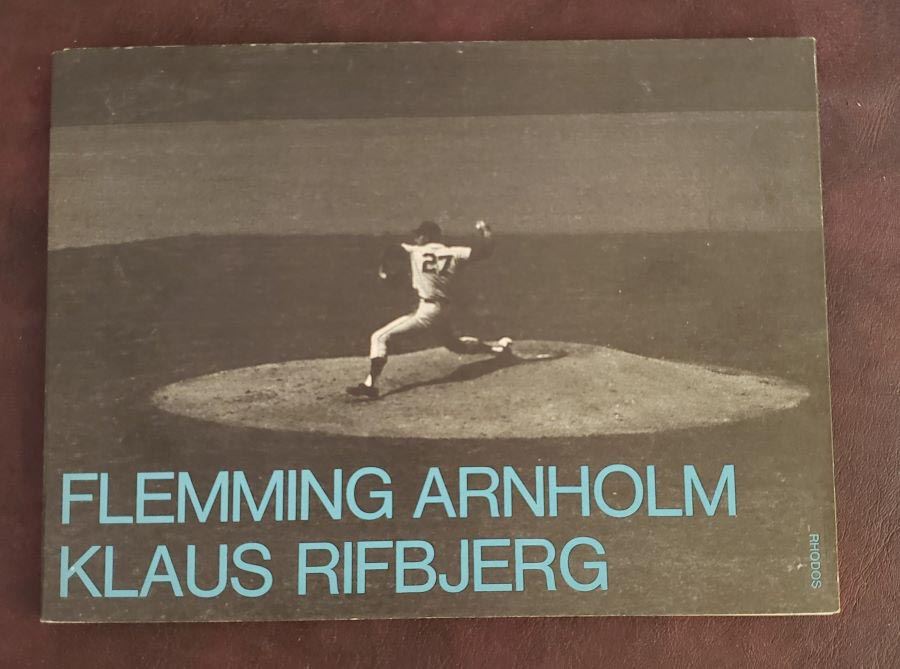
Cover of Flemming Arnholm & Klaus Rifbjerg (untitled - Fotografier og digte fra New York)
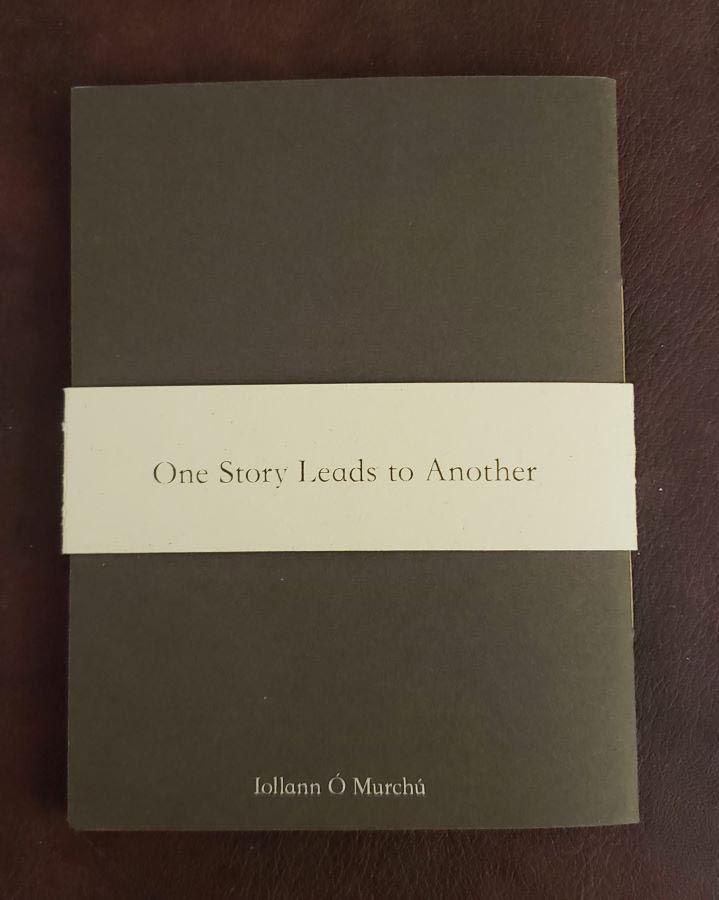
Cover of Iollann O Murchu (One Story Leads to Another)
The first is an untitled Danish book, published by Forlaget Rhodos in 1969, with photographs by Flemming Arnholm made during work in NY along with poems by Klaus Rifbjerg and design by Michael Malling. The images are street photographs made in NYC in 1968 capturing different aspects and reflecting the pace of city life in the late 1960s while the poems, mostly written years earlier, convey a similar sense of energy while describing various elements of American culture and place unrelated to the images. While it is possible to completely unfold the work (as shown in the illustration), a gradual unfolding and folding of the pages and rotating of the book is more likely. The latter is further encouraged by the different orientations of the images and text and perhaps mimics trying to process all the stimuli experienced routinely while walking through New York.
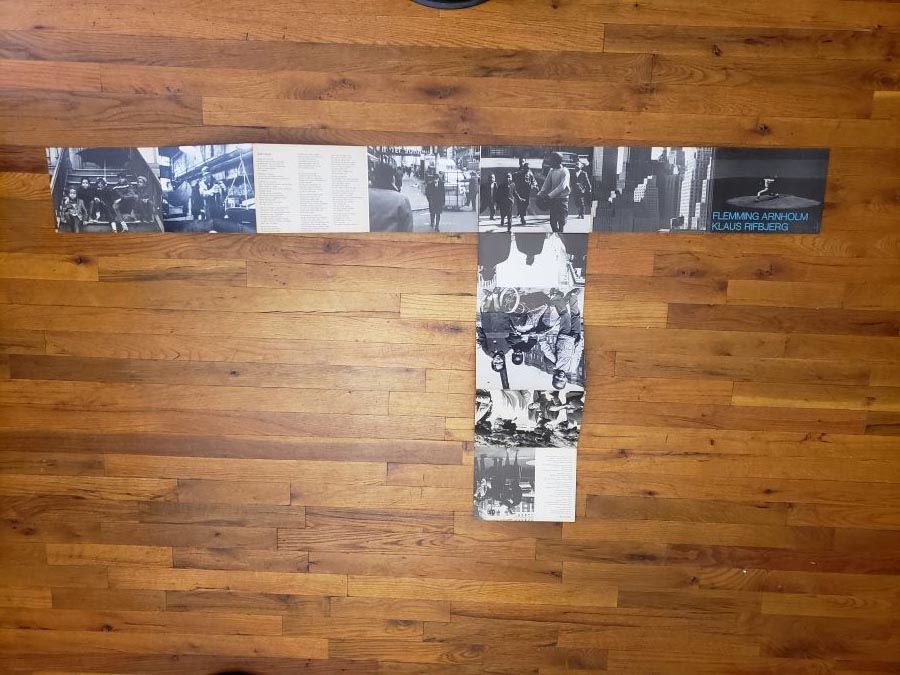
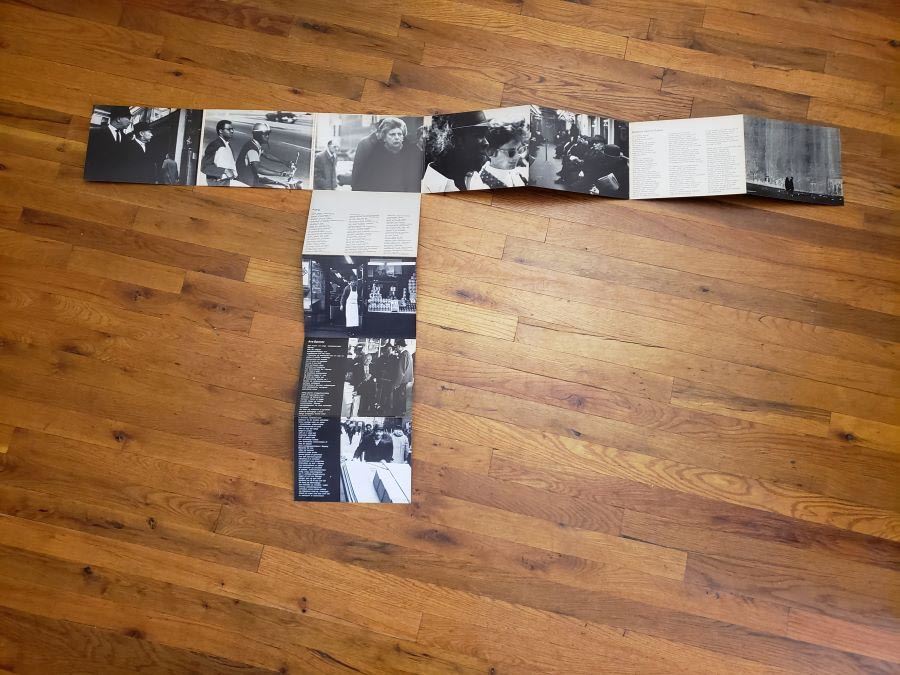
Details of the Arnholm/Rifbjerg book
The second book is One Story Leads to Another (Tarraingíonn Scéal Scéal Eile) self-published in 2022 by Iollann O Murchu with images, text, and design (along with Graham Dow), all hand produced by the artist. The work brings together Irish landscape, mythology, and folklore and if the NY book is working to unsettle the reader this book is much quieter. As with the NY book, there is no single path through the book but rather collections of images and text that the reader can meander through. Once unfolded, there are 3 separate sections the reader can choose to engage with to experience the atmosphere created by the photographs and text. These elements produce a cumulative effect rather than any narrative or linear one, an effect which might be lost in a conventionally bound book.
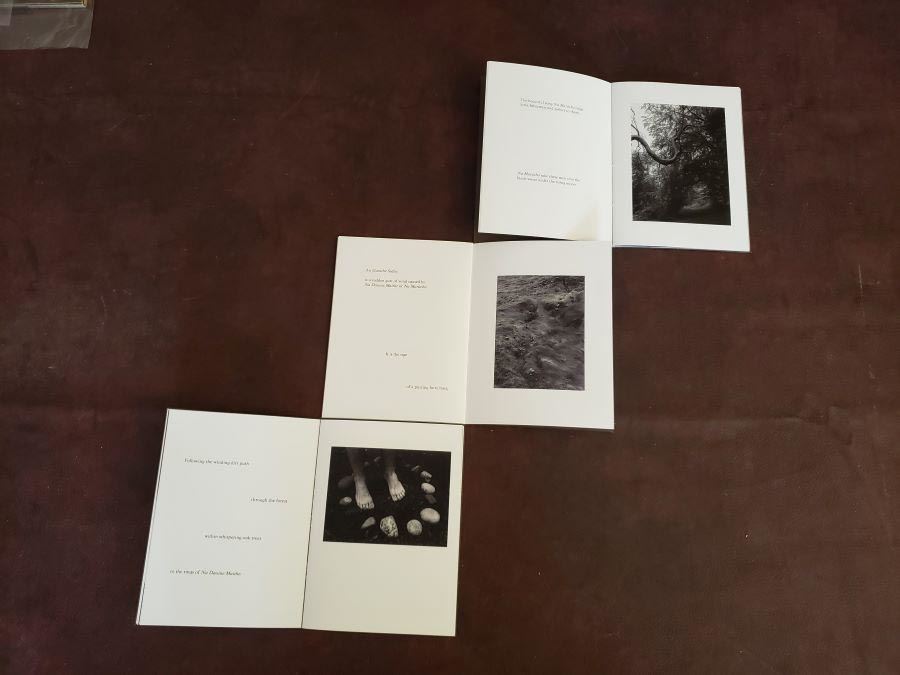
Details of the O Murchu book
In addition to following up on last month’s conversation, I hope I’ve prompted you to notice and to think more about projects combining poetry and photography and how such books do or don’t work. I’d welcome more discussion and thoughts about this topic - as well as more suggested examples. I’ve also started to investigate critical models for visual poetry - but that is both more elusive and a topic for another post.
[1] Constance Phillips, Photopoems (Covici Friede, 1936) This book by Phillips also is the first use of the term photopoem.
[2] Paul Strand, Time in New England (Oxford University Press, 1950).
[3] Norman McBeath, Robert Crawford, “Photopoetry: A Manifesto” in Chinese Makars (Easel Press, 2016).
[4] “In the Library: Poetry and the Book Arts”, National Gallery of Art, Washington, DC. https://www.nga.gov/exhibitions/2023/library-poetry-book-arts.html
[5] David Solo, “Photopoetry and the Artists’ Book” in Artist’s Book Yearbook 2022/23 (University of the West of England, 2022), 106-113.
David Solo is a co-founder and co-editor of Book Art Review (BAR), a criticism initiative founded at Center for Book Arts in 2020 and serves on the boards of the Grolier Club, 10x10 Photobooks and the Kraszna-Krausz Foundation. He is a collector and researcher based in Brooklyn focused on artists’ books and photobooks.

